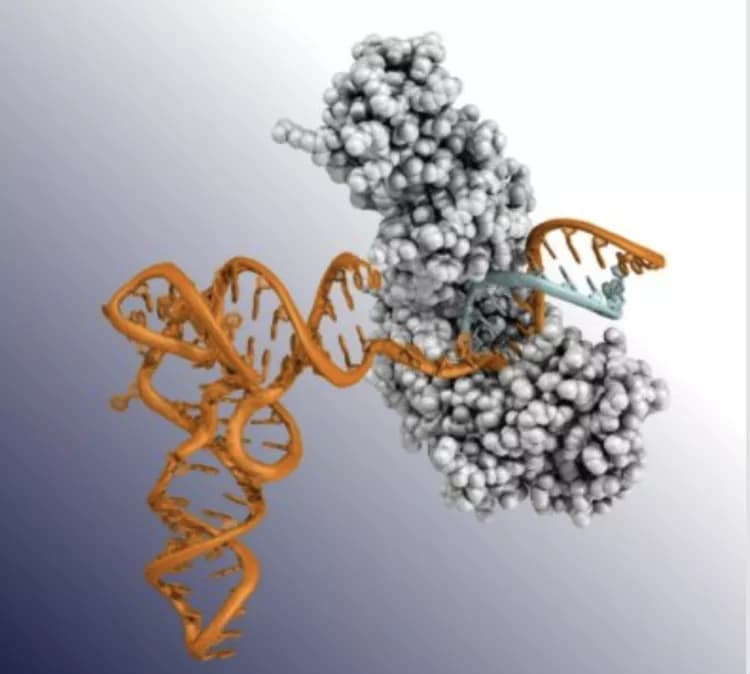
Ancient Enzyme Could Boost Power Of Liquid Biopsies To Detect And Profile Cancers
Scientists are developing a set of medical tests called liquid biopsies that can rapidly detect the presence of cancers, infectious diseases and other conditions from only a small blood sample. Researchers at The University of Texas at Austin are developing a new tool for liquid biopsy that could soon provide doctors with a more complete picture of an individual's disease, improving their chances of finding the best treatment, while also sparing patients the pain, inconvenience and long wait times associated with surgical biopsies.
Alan Lambowitz, a professor in the Institute for Cellular and Molecular Biology and the Department of Molecular Biosciences, and his team are studying an ancient enzyme in bacteria that can be used to detect bits of genetic material shed by cancer or other diseased cells into a patient's bloodstream.
Many current liquid biopsies can detect DNA in blood; others can detect RNA, although they tend to miss many key RNA biomarkers and misinterpret others. But this ancient enzyme, described in a paper published today in the journal Molecular Cell, detects the full range of RNAs with much higher accuracy, which is helpful for understanding both the general profile of a disease such as cancer and specific information about its activity in a particular patient. This improved method could provide a key tool for doctors pursuing the dream of precision medicine, or treatments tailored to individuals based on their genetics and life histories, as well as the unique aspects of their diseases.
In this new study, postdoctoral researcher Jennifer Stamos uncovered for the first time the molecular structure of this RNA-detecting enzyme in action, offering clues about how it works and how it can be improved for use in medical tests.
Both DNA and RNA bear genetic information useful for understanding a disease state such as cancer. DNA is like a menu in a restaurant, containing all the information about meals a customer can choose from on any given day, whereas RNA is like the customer's order -- the numbers and specific types of meals actually requested.
"DNA biomarkers are static. They provide information about mutations that cause a disease, but they don't provide information about the effect of these mutations on cellular processes, which can differ in different individuals," said Lambowitz. That's one reason a cancer-causing mutation can have different effects and respond differently to treatment, depending on the individual, a key consideration for personalized medicine.
By contrast, "Monitoring cellular RNAs provides a snapshot of exactly what is happening in diseased tissue, such as a tumor, at a particular time," Lambowitz said. "The method can be used to monitor day-to-day progression of the disease and response to treatment and to predict how different individuals with the same cancer will respond to different treatments."
Lambowitz envisions a liquid biopsy that, in combination with other tools, would provide health professionals with all of this information. The group of enzymes he studies and that he believes can help are called TGIRTs (pronounced TIE-girts), short for thermostable group II intron reverse transcriptases. TGIRTs find strands of RNA and create complementary strands of DNA that encode the same information and can be rapidly sequenced to provide diagnostic information. Because they are able to accurately make DNA copies of almost any type of RNA from very small amounts of starting material, they would do a better job of catching biomarkers for disease than anything currently available in an RNA-based liquid biopsy, according to Lambowitz.
Lambowitz and his team are collaborating with clinicians to test liquid biopsies based on this TGIRT enzyme. One, at the University of Texas MD Anderson Cancer Center in Houston, focuses on inflammatory breast cancer. Another, at City of Hope National Medical Center near Los Angeles, focuses on multiple myeloma, a form of cancer that affects cells in bone marrow. If successful, these new liquid biopsies would join other liquid-biopsy techniques already in use, such as one that detects in the blood of pregnant mothers chromosomal abnormalities in a developing fetus.
TGIRTs are ancient enzymes that date to a time when genetic information was stored mainly in RNA but life was transitioning to DNA. Another major finding of the study was that TGIRT enzymes are remarkably similar to enzymes from RNA viruses, which copy RNA. This highlights the potential evolutionary role of TGIRTs and other closely related enzymes in the evolution of present-day organisms, which use DNA for genetic material.
The study's other co-author is Alfred Lentzsch, a graduate student in molecular biosciences.
This work was supported by the National Institutes of Health and the Welch Foundation.
TGIRT enzymes and methods for their use are the subject of patents and patent applications that have been licensed by The University of Texas and East Tennessee State University to a University of Texas spin-off company, InGex LLC. Lambowitz and the university are minority equity holders in InGex, and the university, Lambowitz and some of his present and former lab members receive royalty payments from the sale of TGIRT enzymes and kits and the licensing of intellectual property.
Materials provided by University of Texas at Austin. Note: Content may be edited for style and length.
Disclaimer: DoveMed is not responsible for the accuracy of the adapted version of news releases posted to DoveMed by contributing universities and institutions.
References:
Jennifer L. Stamos, Alfred M. Lentzsch, Alan M. Lambowitz. (2017). Structure of a Thermostable Group II Intron Reverse Transcriptase with Template-Primer and Its Functional and Evolutionary Implications. Molecular Cel. DOI: 10.1016/j.molcel.2017.10.024
Related Articles
Test Your Knowledge
Asked by users
Related Centers
Related Specialties
Related Physicians
Related Procedures
Related Resources
Join DoveHubs
and connect with fellow professionals

0 Comments
Please log in to post a comment.